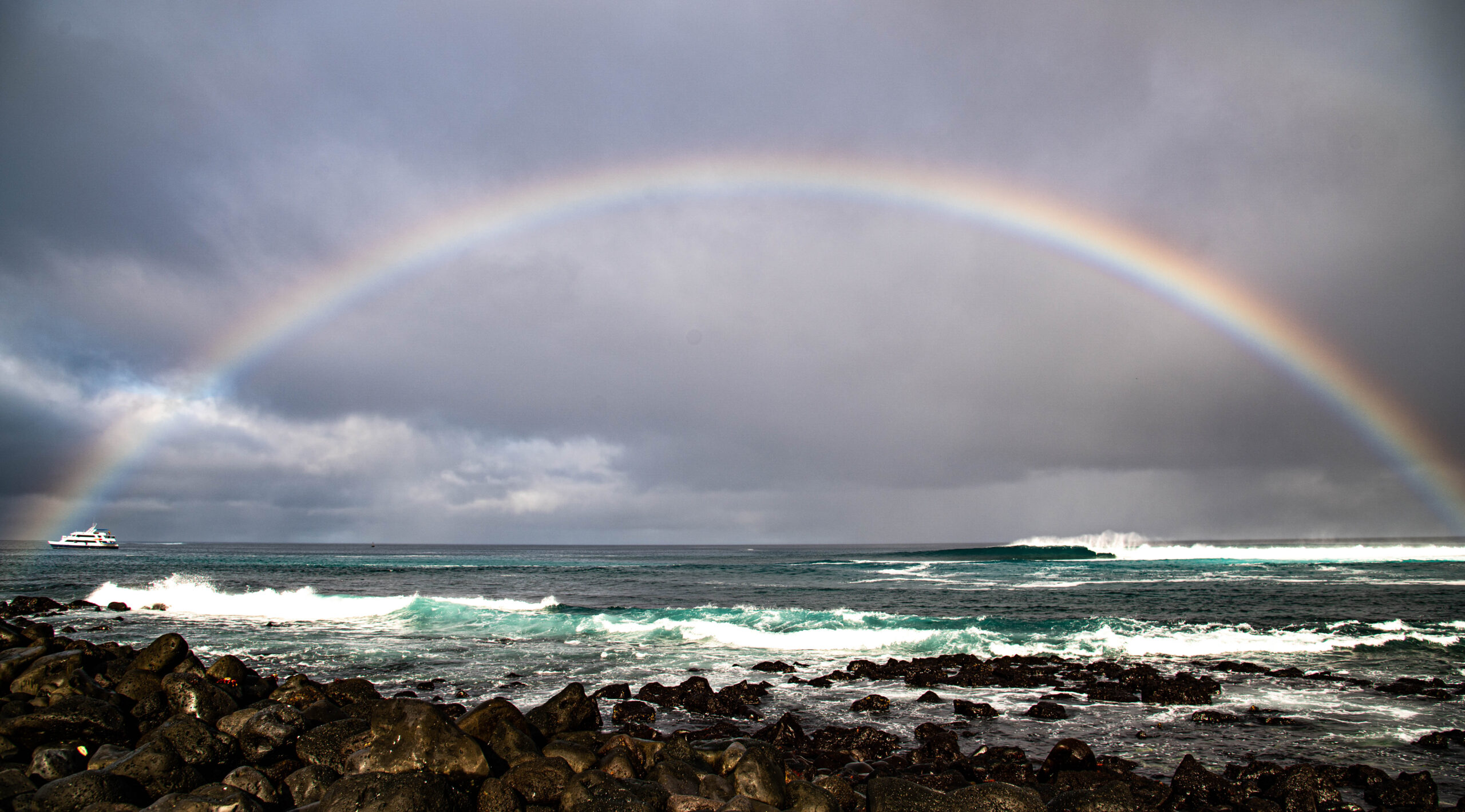The shark named “Banco” was tagged with an internal acoustic transmitter on the night of August 21 in the outer zone of Golfo Dulce, when he was around 2 years old and just over 1 m long.
After almost 3 years of not having news of his movements, Banco was detected between March 21 and April 4, 2021, by an acoustic receiver deployed more than 1000 km away, at Darwin’s Arch in the Galapagos Islands, Ecuador. This is the first connection between a coastal nursery area and an oceanic critical habitat. It was possible thanks to an international collaborative research effort between Costa Rican researchers from Misión Tiburon (www.misiontiburon.org) and Ecuadorians from Universidad San Francisco de Quito, Galapagos Science Center (https://http://www.galapagos.lol), both members of the regional Migramar network (https://migramar.org).
The scalloped hammerhead shark, Sphyrna lewini, is a migratory species from tropical and subtropical waters. The pups spend their early life stage in nursery areas, generally located in highly productive coastal areas such as mangroves and river mouths; when they reach sexual maturity, they migrate to the open ocean, and form large aggregations at the oceanic islands of the Eastern Tropical Pacific, namely, Isla del Coco (Costa Rica), Galapagos Islands (Ecuador), Isla Malpelo (Colombia). Its populations have declined globally, and one of the most threatened populations is in the Eastern Tropical Pacific, mainly due to overfishing, habitat degradation and pollution. As a consequence of steep population declines of hammerhead sharks, in 2019, the International Union for Conservation of Nature (IUCN) updated its red list classification to Critically Endangered. Due to its migratory nature, the study of the hammerhead shark population requires collaborative efforts among researchers from across the region.

The Migramar network is made up of scientists from different countries of the Eastern Pacific with the purpose of sharing methodologies and technical information in order to achieve results of greater impact for the conservation of threatened marine species. “This finding highlights the importance of joining international efforts to identify, protect and connect nursery areas in coastal areas, where the interaction between hammerhead shark and human activities is even greater than in oceanic areas. In this context, Ecuador has already acted on the matter, declaring two new marine protected areas, one in the coastal zone and the other in oceanic waters. Although in Golfo Dulce, Costa Rica, there are specific protection measures for the scalloped hammerhead shark, they must be complemented with stronger conservation actions. The creation of new marine protected areas in coastal zones is urgent, we hope that Costa Rica will follow the example of Ecuador”, commented Ilena Zanella, researcher at Misión Tiburón. “This is yet another example of connectivity of endangered marine species between Ecuador and Costa Rica,” explained Dr. Alex Hearn, Professor at Universidad San Francisco de Quito. “At least six species of sharks and two species of marine turtles migrate between the two countries, where they are susceptible to the nets and hooks of our fishing fleets. This is why we must congratulate Ecuador on the recent announcement to create a new marine reserve, which will help protect their migratory routes. Costa Rica must step up urgently and do the same.”





